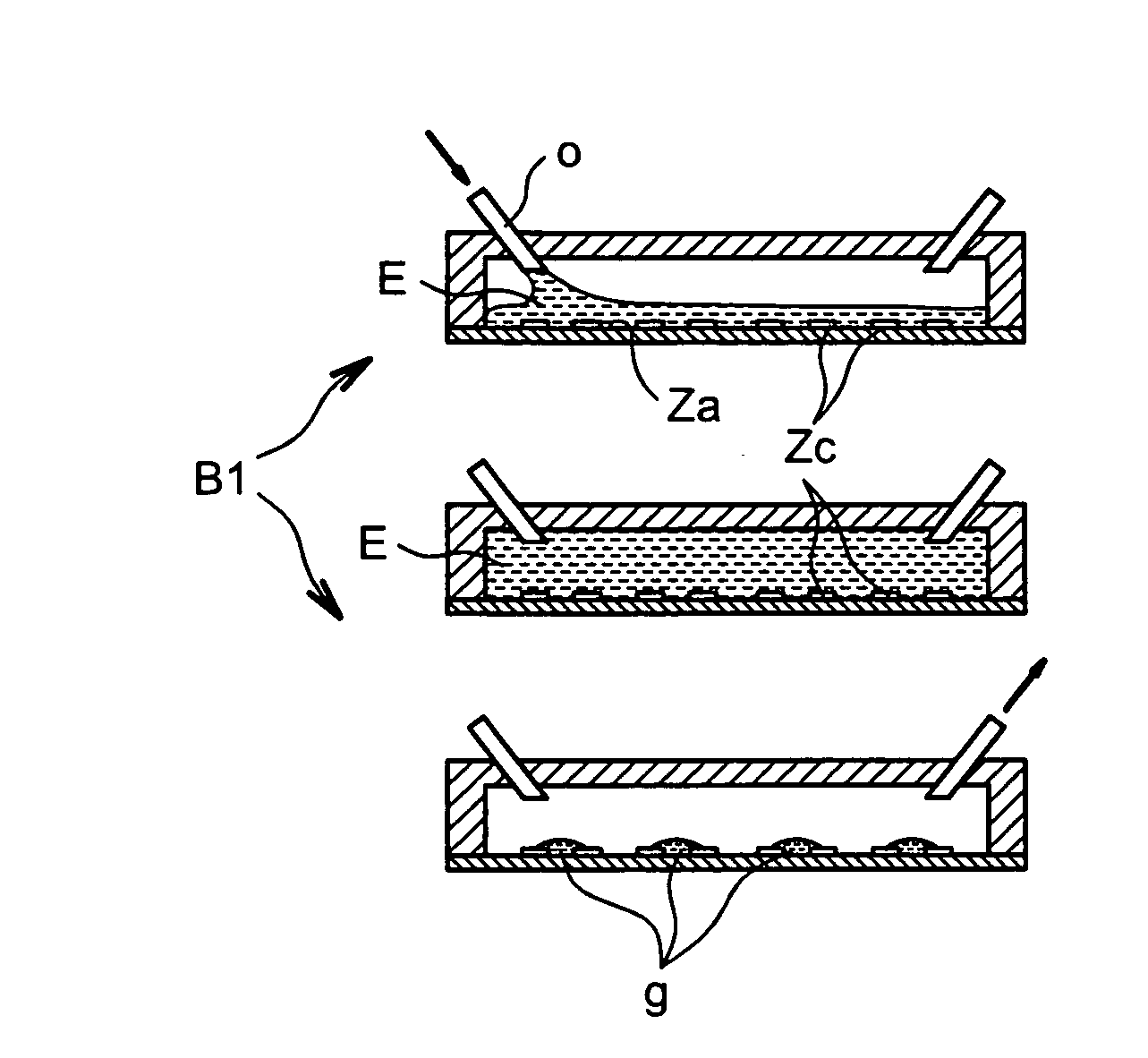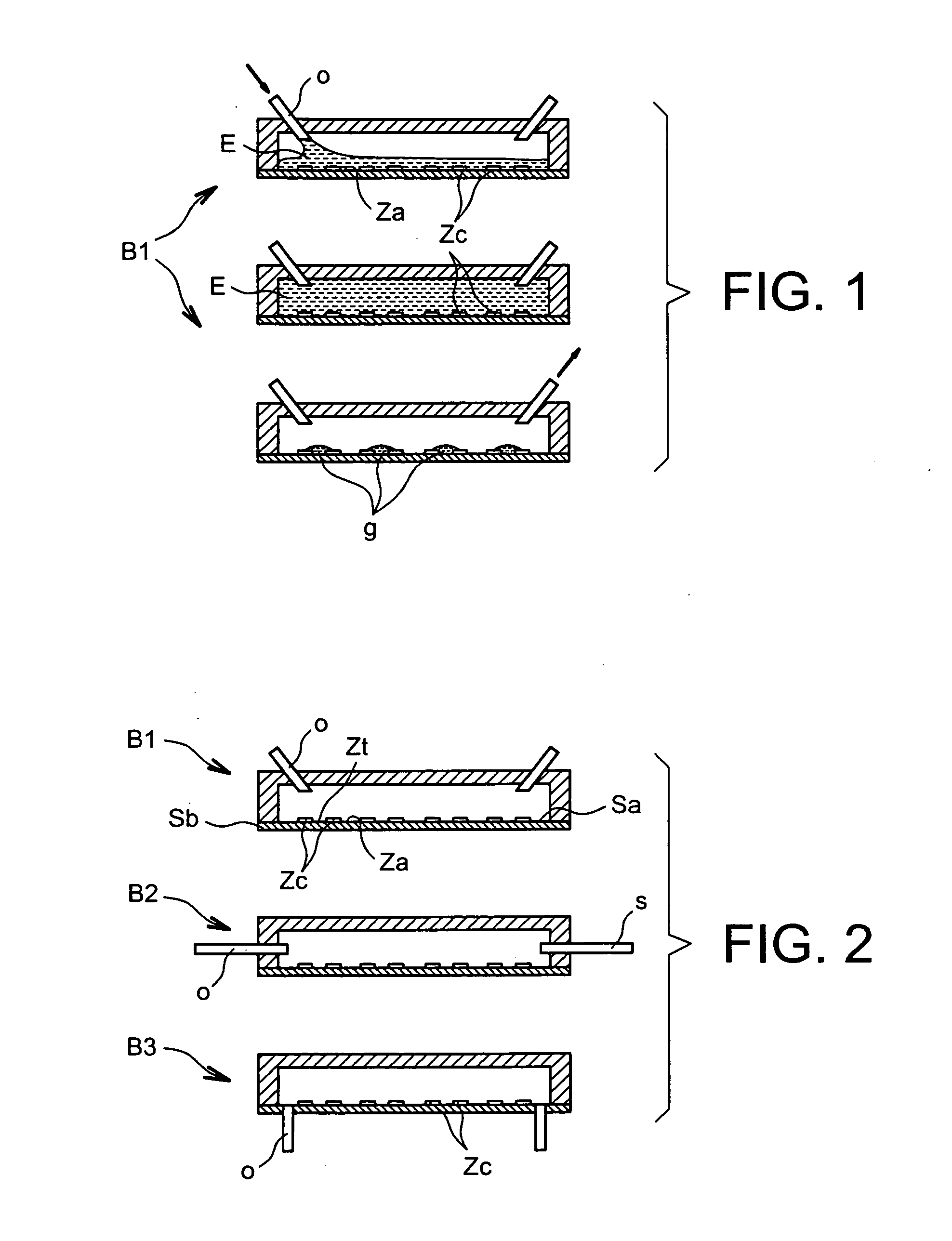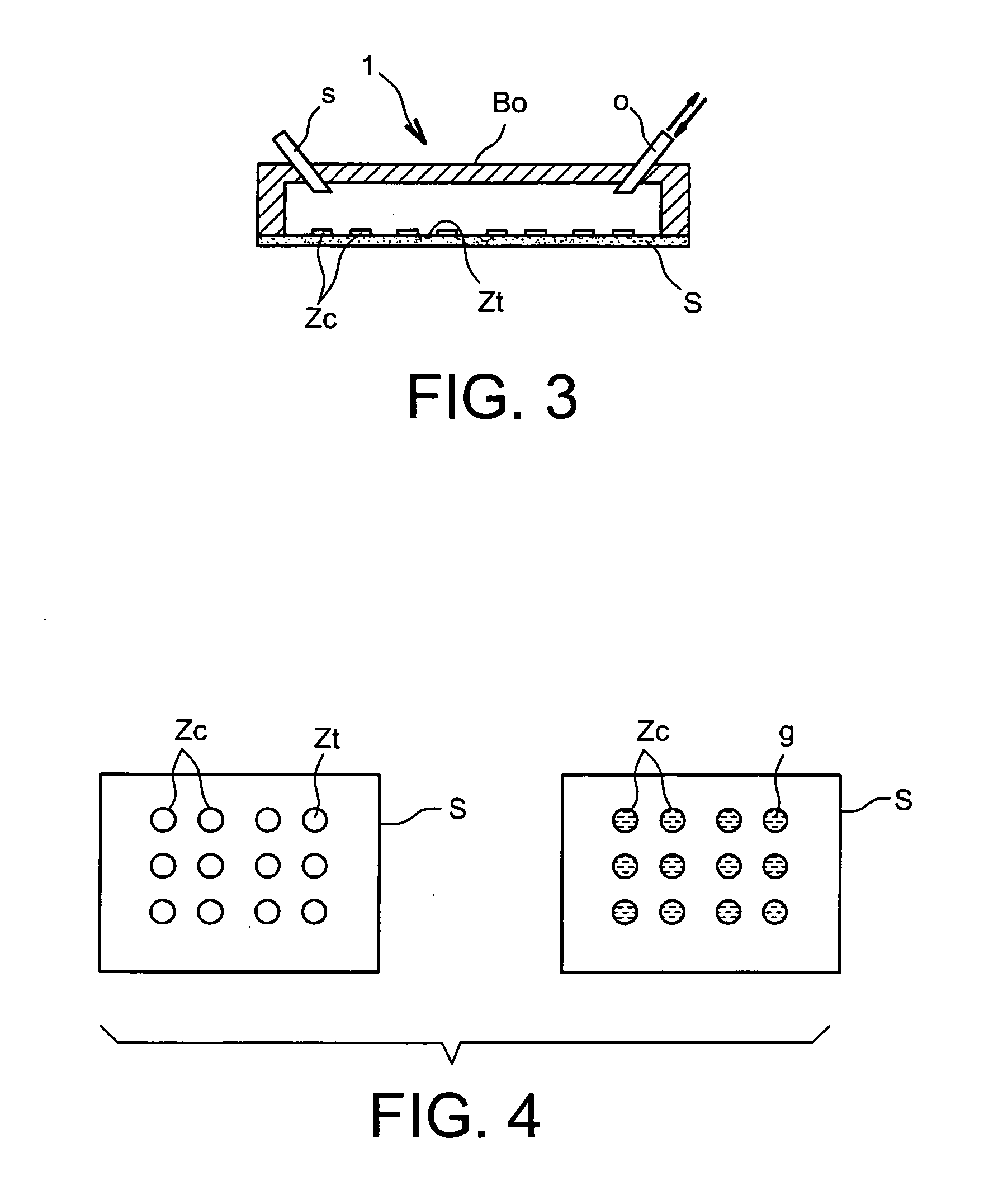Process For Distributing Drops Of A Liquid Of Interest Onto A Surface
- Summary
- Abstract
- Description
- Claims
- Application Information
AI Technical Summary
Benefits of technology
Problems solved by technology
Method used
Image
Examples
example 1
Example of Manufacture of an Active Surface that is Non-wetting with Respect to an Aqueous Liquid of Interest
[0119] A silicon (Si) substrate with a 300 nm upper layer of silicon oxide (SiO2) is treated with a hydrophobic silane (1H,1H,2H,2H-perfluorodecyltrichlorosilane) to make the surface hydrophobic.
[0120] The protocol is as follows: after treatment in a 3.5 M sodium hydroxide / water / ethanol mixture for 2 hours at room temperature to generate the silanol sites, the substrate is placed for 10 minutes at room temperature in an anhydrous toluene / hydrophobic silane mixture with a 9 mM concentration of silane. It is then washed with toluene, then with acetone and then with ethanol and finally cleaned by sonication for 5 minutes in ethanol. The substrate is then placed in an oven for 1 hour at 110° C. The contact angle measured with water is 110°.
example 2
Manufacture of an Uptake Area Consisting of a Support Material Placed on the Active Surface that may be used for the Implementation of the Process of the Invention
[0121] On an Si substrate with a 300 nm layer of SiO2, steps that are standard for the man skilled in the art of microelectronics are performed: [0122] deposition of 300 nm of platinum (Pt) by spraying; [0123] photolithography in a photosensitive resin with opening of a circular pattern connected to a current inlet strip; [0124] in a plasma reactor, total ionic etching of the Pt in the areas without resin; [0125] removal of the resin in a bath of nitric acid [0126] in a plasma reactor, chemical vapour-phase deposition of 500 nm of SiO2; [0127] photolithography in a photosensitive resin with opening of the circular pattern; [0128] in a plasma reactor, total ionic etching of 500 nm of SiO2 in the areas without resin; and [0129] removal of the resin in a bath of nitric acid.
[0130]FIG. 7a is a diagrammatic representation of ...
example 3
Manufacture of an Uptake (“Capture”) Area Consisting of Black Silicon, which may be used for the Implementation of the Process of the Invention
[0131] On an Si substrate (all these steps are very well known to the man skilled in the art of microelectronics): [0132] photolithography in a photosensitive resin with opening of a crown-shaped pattern; [0133] in a plasma reactor, ionic reactive etching of about 3 μm of silicon according to the protocol described in document [11] to form black silicon; [0134] cleaning of the surface at the end of etching by treatment in a Plassys MDS 150 plasma reactor (from the Plassis, France) under the following conditions : power 500 W, reaction time 4 minutes, pressure 21.33 Pa (160 mTorr), oxygen flow rate 25 cm3 / min., room temperature; and [0135] removal of the resin in a bath of nitric acid.
[0136] The black silicon formed on these given areas is highly hydrophilic, whereas the silicon is substantially non-wetting with respect to the aqueous liquid...
PUM
 Login to View More
Login to View More Abstract
Description
Claims
Application Information
 Login to View More
Login to View More - R&D
- Intellectual Property
- Life Sciences
- Materials
- Tech Scout
- Unparalleled Data Quality
- Higher Quality Content
- 60% Fewer Hallucinations
Browse by: Latest US Patents, China's latest patents, Technical Efficacy Thesaurus, Application Domain, Technology Topic, Popular Technical Reports.
© 2025 PatSnap. All rights reserved.Legal|Privacy policy|Modern Slavery Act Transparency Statement|Sitemap|About US| Contact US: help@patsnap.com



